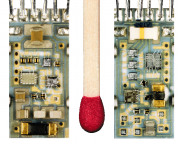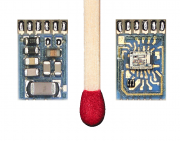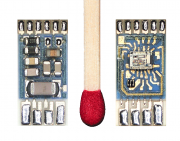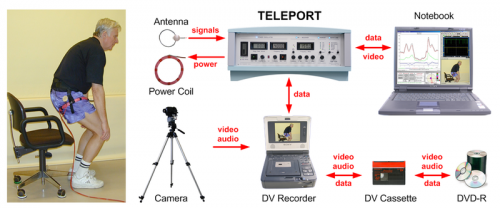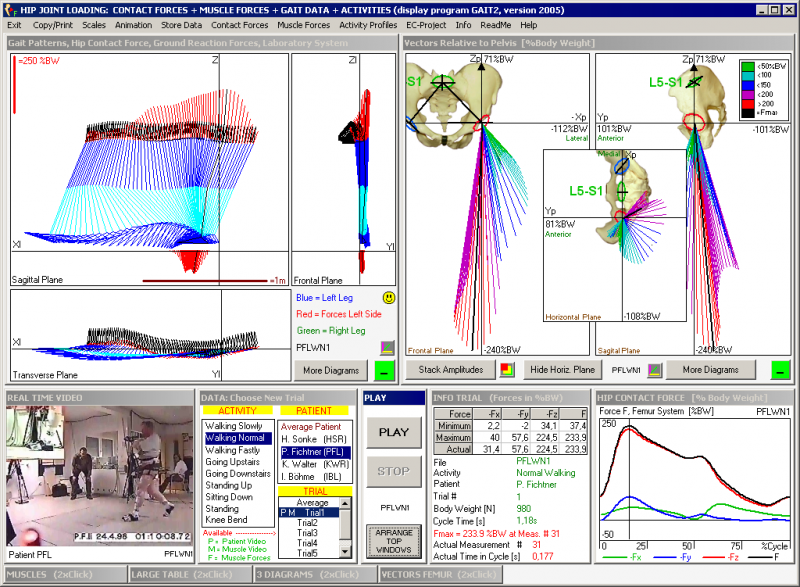Internal telemetry transmitters
Implantable 4-channel telemetry transmitter
The 4-channel telemetry transmitter was manufactured in double-sided thick film hybrid technology with 14 off-the-shelf integrated circuits and 17 passive components. It was used for three-dimensional force measurements with hip endoprostheses (hip I, 1984).
Dimensions: 15 x 7 mm. 8 connection pads for 3 strain sensors, energy coil and antenna.
Download data sheet: 4-channel-transmitter.pdf (330 KB)
Implantable 8-channel telemetry transmitter
The 8-channel telemetry transmitter was manufactured in double-sided thick film hybrid technology with a bipolar transistor array (4.2 x 5.0 mm) and 17 passive components. It was used for load measurements with internal spinal fixators and hip joint force and temperature measurements (hip II, 1991).
Dimensions: 14 x 7 mm. 12 connection pads for 6 external sensors, energy coil and antenna.
Download data sheet: 8-channel-transmitter.pdf (444 KB)
Implantable 9-channel telemetry transmitter
The 9-channel telemetry transmitter is made in double sided thick-film hybrid technology and has the dimensions of 12.5 x 6 mm. Analogous and digital parts are combined on a single custom-made chip in BICMOS technology with a structure of 0.8 µm. The total die size is only 2 x 2.6 mm. This low-power circuit includes a 9-channel multiplexer, a programmable memory, a pulse interval modulator and a radio-frequency transmitter. Channels 1 to 6 are used for semiconductor strain gauges or as temperature sensors. Channel 7 transmits the temperature of the hybrid circuit. Depending on the power information transmitted, the magnetic field is regulated by channel 8. Synchronisation of the pulse train is carried out by the aid of channel 9. A Zener diode PROM module stores all information of the calibration process and thus adapts each channel to its corresponding sensor resistance. After successful programming, this part of the hybrid circuit is cut off and total size is now reduced to 9.5 x 6 mm.
The 9-channel telemetry transmitter has been used since 2004 for the instrumentation of shoulder-, knee- , hip III implants and vertebral body replacements.
Download data Sheet: 9-channel-transmitter.pdf (324 KB)


